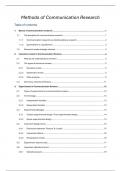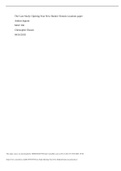Samenvatting
Summary of EVERYTHING you need to know for the CSM exam
Notes of all the lectures, in-class and online. Summary of most important points of all the readings. Answers What, Why and How. List of all approaches/research design you need to know + explanation.
[Meer zien]













